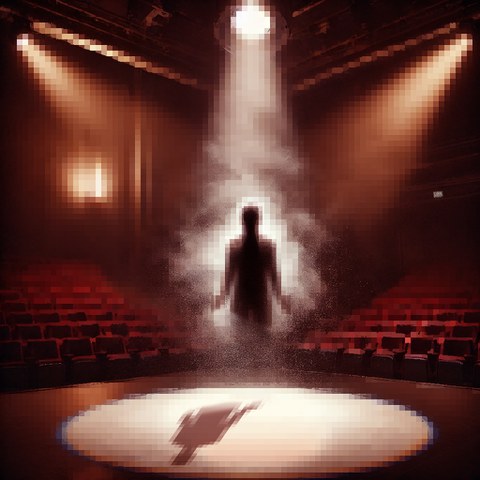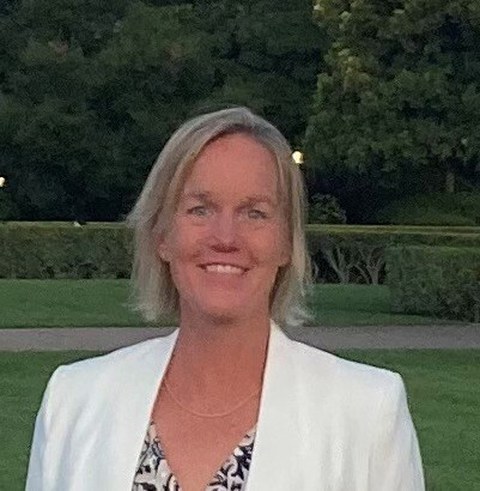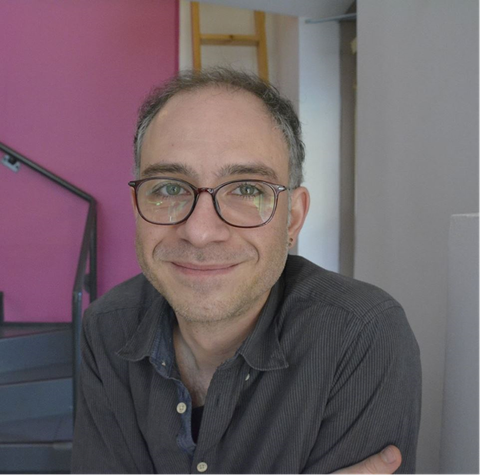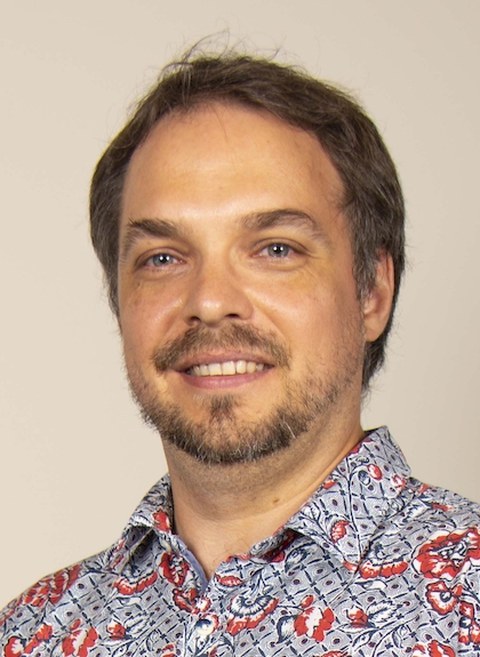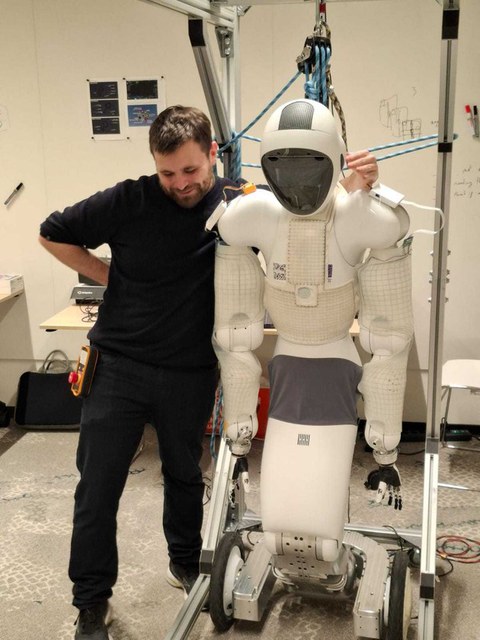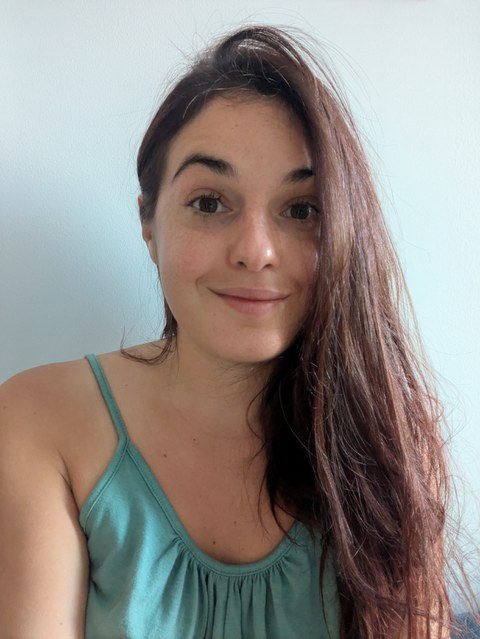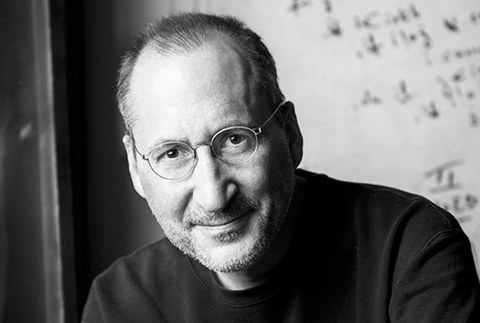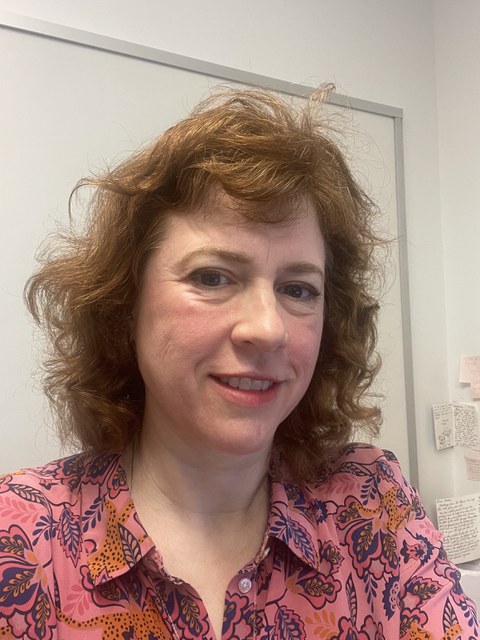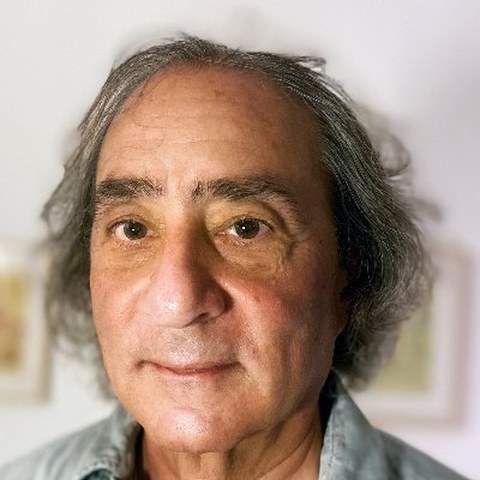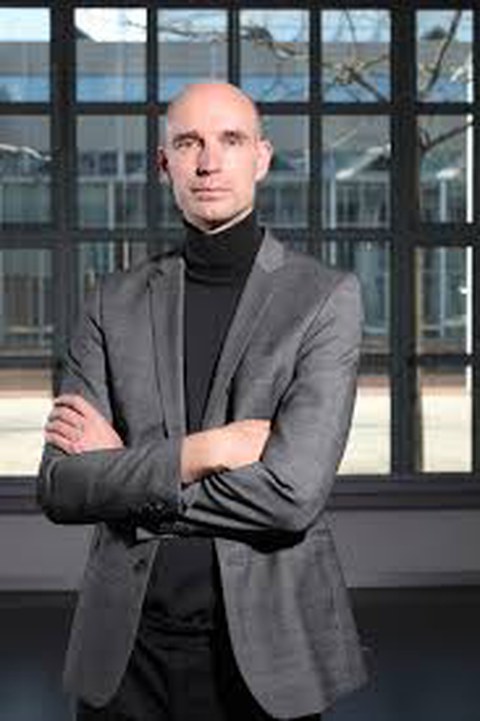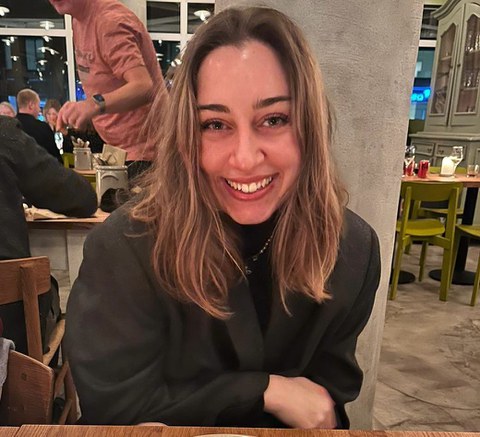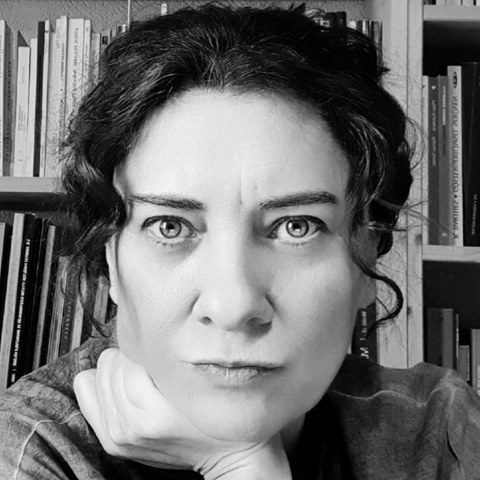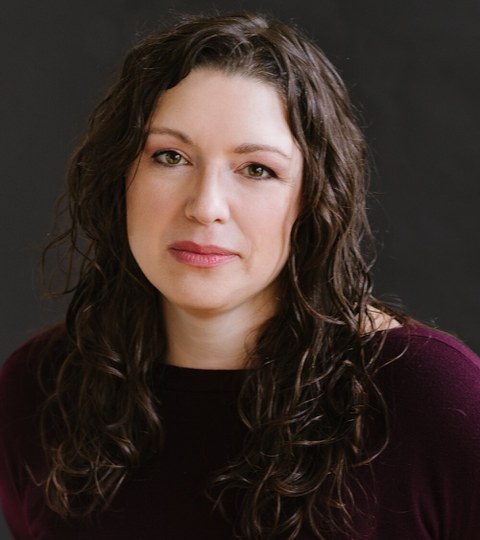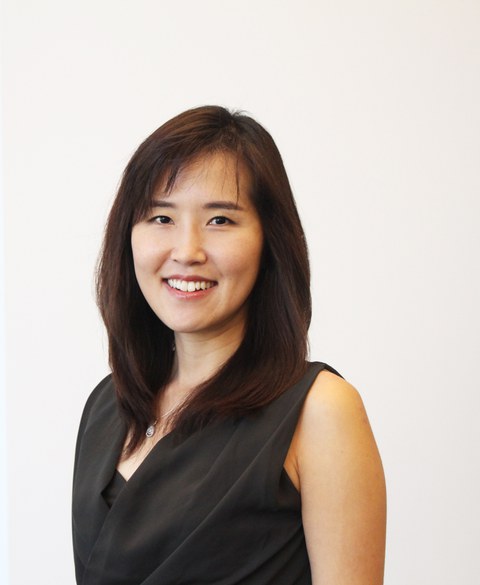SocialBRIDGES: Presence
To participate, please reach out to us on socialbridges@tu-dresden.de and let us know whether you'd like to attend in-person or virtually.
Goodall writes in her book Stage Presence: "If presence is quite literally about the here and now, technologies of representation may be seen as its enemies". But as we will explore in this conference, technological advancements can also shape and deepen our understanding of presence, guiding us through what it means, why and in which contexts it may be a useful concept, and how best to measure and manipulate it.
From the illusion of being in a mediated space to the feeling of sharing a moment with others, presence takes on different forms across disciplines. It is central to discussions in virtual and augmented reality, neuroscience, psychology, philosophy, performance studies, and beyond. Are we truly "there" in a virtual world? What makes us feel the presence of others -- physically, socially, or emotionally? Can presence be trained, enhanced, or disrupted?
The ninth installment of this conference will bring together creative minds from diverse fields to discuss, debate, and experiment with presence. Through talks, panels, and interactive sessions, we will explore the boundaries between embodiment and perception, illusion and reality, technology and human experience.
Keynote addresses by Prof. Mel Slater, Prof. Kristine Nowak and Prof. Olaf Blanke.
September 22nd, 2025
10.00 Keynote by Prof. Kristine Nowak, Professor in Communication and the Director of the Human Computer Interaction Lab at the University of Connecticut
What Presence and “Being There” Means for Being Here: Trends, Warnings and Even Suggestions
Despite ongoing debates on how to define or measure presence, the various dimensions of it have been acclaimed as a key performance goal for digital media and the defining characteristic of virtual reality. Presence can facilitate powerful experiences that can be shared with others and enhance learning and relationships. However, more presence is not always better especially when it is unfocused. Unfocused presence occurs when a system has technological features that increase presence with or in an environment that is not targeting people’s focus on the interaction goals. This unfocused presence can detract attention from learning or engagement with others and even overwhelm people’s cognitive resources. Also, while many people feel presence and enjoy playing with “cool” multisensory immersive tools that may enhance presence, there are no universal designs that will enhance it as individual differences influence presence more than technological affordances. Presence is influenced by previous experience with the system, perceived appropriateness, computer anxiety, and interest in the content. This talk briefly overviews the historical debates about presence and concludes with suggestions for designers and researchers as we continue to explore the causes and consequences of presence and how best to use it.
11.00 Dr. Rami El Ali, College of Information Science, University of Arizona
Towards a Unified Account of the Sense of Presence in Virtual Reality
Empirical investigation of the sense of presence (SOP) in virtual reality (VR) has resulted in a wide number of sometimes incompatible interpretations, including spatial, social, self, and cultural presence, amongst others (Lombard & Jones 2015). Can these different interpretations be unified in an overarching framework? I argue that the answer is yes. Beginning with presence and the SOP as they occur in everyday experience, I present a series of contrasts to other experiences, including the experience of dreams, pictures, illusions, hallucinations, and depersonalization-derealization disorder. These contrasts allow us to isolate two axes on which different SOPs vary. On the one hand there are variations in the type of object (e.g. the self, a physical object) experienced as present. And on the other hand there are variations in the way an object is experienced as present (e.g. affectively or perceptually). With these distinctions in place, I return to VR experience, arguing that the SOP in VR results from directly manipulating the motor and perceptual systems, which indirectly manipulates other systems. To further hone on in desirable manipulations, I argue that we should distinguish virtually representing and virtually reproducing features in VR experience, while acknowledging the role of experiential holism. Webpage: ramielali.com
11.30 Talk by Katja Krug, TUD
Present or represented? Sharing Spaces with Avatars in Mixed Reality
Mixed and virtual reality technologies open up new possibilities for connecting people across distances and bringing them into shared spaces. Remote individuals are often represented by virtual avatars, whose design not only shapes our well-being but also influences the acceptance of our virtual peers as part of our social environment. The awareness of being represented by an avatar can likewise affect our social interactions and self-perception.
The seamless integration of virtual avatars as substitutes for physical people is more than a design-related challenge. It is through the interplay of technological, psychological, and design factors that a complex landscape of challenges emerges on the path toward social presence in the company of virtual avatars.
This presentation sketches some of the questions that arise when people are embodied by avatars in mixed reality environments. Selected project examples will be used to highlight technological aspects and user preferences.
12.00 Interactive Session with Christoph Levermann, Freelance Theater
Artist and Puppeteer
The presence and value of the art figure in the real and digital space
When a person enters the stage, a statement is created. As soon as another person is watching, an expectation arises. The convergence of these two factors creates theater. The audience perceives the presence of the fictional character on stage while simultaneously sensing the presence of the person sitting next to them. A story unfolds in the space, to which all participants are equally exposed. But what happens when we transfer such an experience to the virtual world? What impact does it have on stage and auditorium when all attendees are physically "separated" from one another? After all, theater professionals depend on the presence of an audience to give value to their art form. Theater, which has been part of our cultural heritage for centuries as a ritual and has created fixed social rules through its long existence, [might] require new rules for audiences and artists in order to make the transition to the digital world. This lecture outlines the reasons why it is so important for performers and viewers to be present for each other. But what paths should performers and audiences choose in order to rediscover themselves in the digital space? Does digitizing this social interaction ultimately add any value at all? Can puppeteers replace their puppets with virtual avatars to establish a new and closer connection with their online audience? Or is it more a story of eternal failure, as it has already become apparent during the coronavirus pandemic?
13.30 Talk by Prof. Tom Froese, Embodied Cognitive Science Unit, Okinawa Institute of Science and Technology OIST
What is the neural basis of recognizing haptic feedback as mediated social touch?
Sensitivity to social contingency refers to an individual’s capacity to recognize when external behavior is dependent on their own behavior, which has been proposed to be at the origins of social perception. We investigated the neural correlates of this capacity using the Perceptual Crossing paradigm, in which pairs of adult are tasked to locate each other in a minimalistic virtual space by using a haptic interface that vibrates when a participant’s avatar overlaps with any other virtual object. Analysis of individual brain activity revealed that successful recognition, specifically in those trials in which the participant recognized the other early, was reflected in weakened large-scale frontoparietal neural coherence in the upper frequency range of 13-55 Hz. Early recognition was also associated with the highest proportion of subjective reports of a clear awareness of the other’s presence. Unexpectedly, this difference in neural coherence was not specific to the moment of recognition but was found to persist for the whole 60 seconds of the trial. Thus, haptic feedback can be recognized as mediated social touch when there is an affordance for reciprocal interaction, and social presence is especially pronounced when the individual perceiver is in a state of open readiness to be affected.
14.00 Talk by Dr. Camille Sallaberry, TUD
Social Robot-Avatar: Asymmetric Interaction and Perception of the Sense of Presence
What makes us feel present when we interact with someone else through a communication medium? This question has been already extensively researched through the years. However, most interactions were symmetric with individuals getting access to the same type of information (video-conference, Virtual environment, etc.). In an avatar-mediated interaction, a “controller” perceives the other through a multitude of devices while a “recipient” interacts directly with the robot. That induces a difference in the type, quality and quantity of information accessible by each of them (e.g. touch feedback with a haptic sleeve or feeling the touch of a robot). With this talk, we want to explore human-mediated interactions through a physical robot-avatar and how its asymmetrical setup may influence the feeling of Presence.
In addition, I would also like to propose a work in progress pictorial measuring tool related to the Sense of Presence. Designed for robot-avatar interaction, this tool is being developed in the intent to complement existing measures (e.g. Networked Minds, SAM PAD, etc.) through images only. With those pictures, we aim to evaluate measures such as the emotional perception and contagion, the awareness of the other beyond the avatar or the perception of physical safety within the group.
14.30 Talk by Dr. Sara Falcone, Seidenberg School Of Computer Science and Information Systems, Pace University
A multidisciplinary investigation to unravel the complexity of the sense of embodiment in teleoperation
What makes us feel that we are the ones acting, especially when control happens at a distance, through a machine? This talk explores how humans experience the sense of embodiment, particularly agency and ownership, in remote and robotic systems. Drawing on experimental work in teleoperation and human-robot interaction, we will examine how design choices - such as the degree of autonomy, type of control interface, and availability of sensory feedback - can shape these experiences. In systems where control is shared between a human and an autonomous agent, a careful balance is required to maintain the user’s sense of agency. The talk will also highlight how sensory feedback channels - visual, proprioceptive, or haptic - can be used to support situational awareness, reduce cognitive load, and create a more natural and intuitive sense of control. This research contributes to the design of robotic systems that not only function effectively, but also feel meaningfully connected to the human operator.
15.30 Prof. Christopher Salter, Professor/Director, Immersive Arts Space, Zurich University of the Arts
Specious Presence: Shifting attention and experience in mixed reality
Although the concept of mixing physical and computational environments dates back to Sutherland's (1965) work and others in the mid 1960s, the recent technological shift towards video passthrough-based mixed reality begins to challenge more established conceptions of presence by making space itself co-extensive to human movement and action. In particular, notions of co-presence, the term coined by sociologist Erving Goffman to describe the experience of being face to face with other bodies co-located in the same physical space suggests that the social has a stronger role to play than has been researched before in mixed reality encounters. This talk discusses an ongoing research project being conducted at the Immersive Arts Space at the ZHdK entitled Probing XR's Futures which attempts to explore the socio-phenomenological implications of being "present" with others in both physical and digital spaces.
Webpage: https://blog.zhdk.ch/immersivearts/
16.00 Talk by Prof. Robin Zebrowski, Depts. of Philosophy, Psychology, and Computer Science, Beloit College
Presence-As-Absence and Intercorporeality: Being-At-A-Distance
This talk explores the interplay between presence, social cognition, and intercorporeality (the somewhat ineffable feeling of sharing a real space with real lived bodies) and how Zoom (and similar telepresence technologies) have disrupted old categories and created new ways to understand these phenomena. I argue that there’s something fundamental about our experience that is hindered by the use of these mediating technologies, and how that is reflected back in the values we profess (e.g., during the COVID pandemic wanting students in classrooms, wanting to be at the conferences instead of Zooming in, etc.) Importantly, our perceptual skills for direct interaction don’t carry over perfectly to telepresence technologies, although in principle those skills can be developed. In order to do so, we must understand the phenomenon itself. Living bodies in real spaces matter in surprising ways.
16.30 Talk by Prof. Andrea Stevenson Won, Cornell University
The Potential of Co-Embodiment for Hypersocial Interactions in Hybrid Meetings
Face-to-face meetings have long been a gold standard for sharing information and building connections. Ideas can be explored in real-time, misunderstandings can be quickly clarified, and complex concepts can be effectively conveyed. However, not everyone is able to attend such gatherings due to travel costs, scheduling conflicts, geographical barriers, or accessibility issues. Fully virtual conferences, although potentially a high presence medium, may also pose barriers to access. In hybrid gatherings, remote participants are sometimes siloed and unable to fully participate, depriving them and the research community of the opportunity to share their insights and to collaborate. To address this issue, we describe an early prototype for interactions based on co-embodiment. We build on existing work in accessibility, novel embodiment and remote collaboration. These new forms of interaction leverage social touch and other non-visual communication methods to create new forms of social presence.
17.00 Keynote by Prof. Mel Slater, University of Barcelona, and co-Director of the Event Lab (Experimental Virtual Environments for Neuroscience and Technology)
Advances in the Theory and Evaluation of Presence
Presence has been an invariant research topic in the field of Virtual Reality (VR) since the early 1990s. The scientific puzzle is that even though VR delivers experiences that are somewhat impoverished in relation to the real world, people nevertheless typically have the illusions of being in the virtual environments depicted by the displays (Place Illusion, PI), that events are really occurring there (Plausibility Illusion, Psi), that the virtual body that substitutes their own is their body (body ownership), and that they are there with other people (copresence). We will discuss the theory that PI is founded on perception through natural sensorimotor contingencies and consider new methods for the assessment of presence, or indeed any qualitative response to VR, that do not rely on the use of questionnaires.
September 23rd, 2025
10.00 Keynote by Prof. Olaf Blanke, Bertarelli Foundation Chair in Cognitive Neuroprosthetics, Director - Laboratory of Cognitive Neuroscience, Professor - Neuro-X Institute, EPFL - Swiss Federal Institute of Technology
Neuroscience of the Sense of Self and its Relevance for Presence and Social Presence
I will discuss the sense of self, especially the bodily and embodied sense of self, and how it relates to presence and social presence in VR/XR. My talk will focus in particicular on some of the neuroscientific mechanisms of embodiment, especially multisensory and sensory-motor brain mechanisms involved in self-related processing, self-other distinction and social processes. The relevance for self-presence, the presence (1) of the subject or observer as being present in a certain place within a body and social presence and for the presence (2) of another person will be highlighted. Merging of VR/XR with experimental psychology and the neurocience of embodiment, further empowered by VR/XR mediated human-computer interactions and brain-computer interactions might enable new forms of embodiment and selfhood.
11.00 Talk by Dr. Nicolás Hinrichs, Okinawa Institute of Science & Technology; Max Planck Institute for Human Cognitive and Brain Sciences
A Geometry for Sense-Making
Presence emerges as a dynamic interplay of perception, cognition, and social interaction. In my talk, "A Geometry for Sense-Making," I introduce a geometric framework grounded in participatory sense-making and embodied cognition to elucidate how presence is co-constructed during interpersonal interactions. Employing curvature metrics from geometric network analysis and principles of active inference, I propose innovative methods to quantify and modulate subtle shifts in inter-brain synchrony and embodied coordination. This approach provides a measurable foundation for understanding presence, extending relevance beyond neuroscience to virtual reality, social robotics, and performance studies. By conceptualizing presence geometrically, my framework not only bridges theoretical perspectives but also enables practical manipulation and measurement of embodied experiences, enriching interdisciplinary discussions on human connectivity and experiential realism.
11.30 Talk by Laura Oppi, Department of Communication, University of Copenhagen
Mapping Perceptual Presence
It seems intuitive to contrast what is 'real' with what is 'virtual', 'fake', 'fictional', 'imaginary' or 'hallucinatory'. This distinction is well established in phenomenology, psychopathology, and the philosophy of mind, where perceptual experiences are characterized by a distinctive feature: what is perceived appears to be present to us. By contrast, this feature is typically absent in imagination and memory, where what is imagined or remembered does not feel present. Yet this historical division is not without problems, particularly in cases where the sense of presence is altered. This talk aims to map the main philosophical positions that revolve around the concept of presence. After outlining the most influential accounts, I will turn to alterations of presence, from hallucinations and derealization to more unusual cases such as the “felt presence.”
12.00 Talk by Prof. Beliz Güçbilmez, Department of Theatre, Ankara University
The Presence Tense: A Collapse and a Call to Design
This talk compares two moments in the conceptual life of presence. The first is its heyday in performance theory, where presence rose as protest—against theatre, against mask, against fiction. The second, more recent moment reveals presence calcified into doctrine: shaped by digital immediacy and neoliberal self-performance. What began as critique hardens into rawism—an ideology that pursues the unfiltered and the confessional for affect.
We now inhabit what I call the presence tense —a cultural mood that privileges monologue over dialogue and immediacy over reflection. The result is a collapse between art and life, where fiction’s generative distance disappears. This aesthetic turn mirrors a political one: under the faltering sign of representational democracy, the image of the individual eclipses the possibility of coexisting subjects. How, then, to restore distance and relationality? Against the flattening immediacy of the presence tense—a shift from a dimensional world to the surface of the screen—this talk reclaims metaphor as a design principle and way of thinking. Metaphor holds tension, links the unlike, and restores distance as a condition for meaning. In an age of speed and drift, it defers. It offers time to ponder. Holding on to the metaphorical mind is an invitation to compose relation.
13.30 Talk by Dr. Bree McEwan, University of Toronto
Affording Presence: Presence and other affordances related to virtually being there
An affordances approach is useful for determining how social technologies may influence human interaction via those technologies (Fox and McEwan, 2019). Different forms of presence such as spatial or social presence may constitute perceived social affordances of virtual environments (Fox & McEwan, 2019; Lombard, 1997) However it is important to understand the constellation of affordances of a particular technology, how those affordances are perceived by users of a technology and how affordances work in connection with each other. This talk will overview an affordance-based perspective, the application of known affordances to virtual environments, as well as recent qualitative work with participants engaging in virtual reality experiences to articulate the constellation of affordances that facilitate and/or hinder feelings of presence in social virtual reality spaces.
14.00 Talk by Prof. Sun Joo Grace Ahn, Grady College of Journalism and Mass Communication, University of Georgia, Director of Center for Advanced Computer-Human Ecosystems
The Boundary Conditions of Presence Experiences in Persuasive Communication
Presence has served as a central psychological mechanism in a large body of studies across a number of disciplines, ranging from computer science to media psychology for several decades. This talk covers findings from recent literature reviews, meta-analyses, and lab studies that demonstrate the boundary conditions of presence evaluated during and after virtual experiences designed for persuasion (attitude and behavior change). When does presence promote persuasion and when is it insufficient to impact attitudes and behaviors? We examine presence experiences in the context of recent media psychology and communication scholarship.
14.30 Talk by Dr. Ceren Özcan, Department of Theatre, Ankara University
Embodied Experience in Theatrical Space: Co-Presence, Co-Constitution, and Communitas
Theatrical space functions as a relational field in which embodied experiences emerge through the interplay of performers and spectators. Presence is not a static attribute but a dynamic, relational process—continuously shaped and negotiated through the co-presence of performers and audiences, through the immediacy of bodies sharing the same time and space. In this shared space, co-constitution arises as spectators contribute to dramaturgical meaning through their lived experience of the performance. These dynamics can be framed through relational dramaturgy, which highlights how presence is shaped collectively through affective, sensory, and cognitive exchanges. Such encounters may culminate in communitas, temporary yet transformative experiences of togetherness that dissolve conventional distinctions between stage and audience. By emphasizing the co-presence of performers and spectators within relational dramaturgical processes, this perspective foregrounds presence as both fragile and powerful—a force that redefines what it means to witness, to participate, and to be-with others in the theatrical moment.
15.15 Interactive Session with Dr. Asaf Bachrach, Centre National de la Recherche Scientifique
The present [is] tense
In French, the word for ‘now’ is maintenant, literally: hand-holding. In Japanese te-gotae literally means hand-resistance and is a term (which does not have a simple one word translation in English) that is used when one experiences the right level of resistance or feedback to one’s actions from the environment. Maintenant and te-gotae describe a particular tonic relation with the world, a form of tensionality through which we dialogue with our environment. They evoke a physical dialogue — a palpable give-and-take — our movement is always shaped by what meets us.
I am curious to explore with you this tensional quality of being [in the] present together. What does it mean to sense the 'now' not as a frozen point in time, but as a vibrating contact — a stretch, a sway, a tremor between bodies, intentions, and perceptions?
Being in the world as an ongoing dynamic fluctuation of tension and release, a musicality of being here now (but also just there, just before or just after). (co-)Presence is not a static moment, but a rhythm. It pulses with delay, anticipation, echoes. It’s never quite just now — it’s also the almost, the becoming, the just after, the echo of what has just passed through.
16.00 Talk by Dr. Anna Ciaunica, Instituto Superior Técnico, Universidade de Lisboa, Co-Embodied Self Lab
(Dis)Embodied Joint Agency in Human-Virtual Agents Interactions
Humans are highly social beings, constantly interacting with others to achieve common goals. Importantly, modern society replaces slowly but surely the human others with artificial others in our daily tasks and exchanges. Previous work showed that the Joint Sense of Agency (JSoA) –the sense of conscious control experienced by humans when acting with others– depends on the type of embodied agent we are acting with. Yet, the effect of interacting with human versus artificial bodies on the human body remains an open question. Here we investigate the effect of Depersonalisation (DP) – a condition that makes people feel detached from their self and body - on embodied Joint Sense of Agency in Human/Human versus Human/Artificial other dyads. We have designed a novel Joint Simon Task in Virtual Reality where 100 participants with High versus Low Levels of DP can embody either a Human avatar or a Social Humanoid Robot ‘Pepper’ avatar. Participants then perform the Joint Simon task either together with a Human avatar or a ‘Pepper’ avatar as co-agent. We hypothesize that participants with High DP will show higher Joint Simon Effect when embodying a robotic ‘Pepper’ avatar. This because people who feel less connected to their bodies and feel as ‘machines’, or ‘automata’ may develop a higher JSoA while doing a task with another robotic body as opposed to a human body. Our study investigates for the first time the effect of human versus artificial embodiment on Joint Sense of Agency in Virtual Reality. A better understanding of how feelings of being (dis)connected from one’s body impacts the way people feel (dis)connected from human and artificial others may help us better design human/artificial agents interactions.
16.30 Talk by Prof. David Parisi, Dibner Professor in the History and Philosophy of Technology and Science, Tandon School of Engineering, New York University
“I want it to be able to hurt me”: pain, desire, and (spectacles of) haptic simulation
In 2022, the Spanish startup OWO began promoting the OWO Skin, a haptic gaming shirt that deviated from prior technologies of tactile simulation by using electricity rather than vibration to strategically target the sense of touch. While OWO has maintained that the Skin isn’t intended to inflict pain on its wearer, but rather aims to produce precisely controlled, realistic sensations, reviewers and vloggers covering the device consistently focused on and celebrated the painful electric shocks they experienced during their gameplay and testing sessions. In doing so, these reviewers situate the ability to experience pain in a computer simulation as central to their experience of immersion and presence: feeling pain effectively raises the stakes of the simulation, enhancing their sense of realism in spite of the rather crude and low-definition electromuscular stimuli employed by the Skin. As these video reviews circulate widely on platforms like YouTube and TikTok, the vloggers narrated experiences of pain simulation help shape our collective understanding of the technohaptic real, a not-quite-real tactile simulation produced through the application of computer-controlled stimuli to the various senses of touch, negotiated discursively in conversations that articulate the role and function of digital touch in simulation culture.

